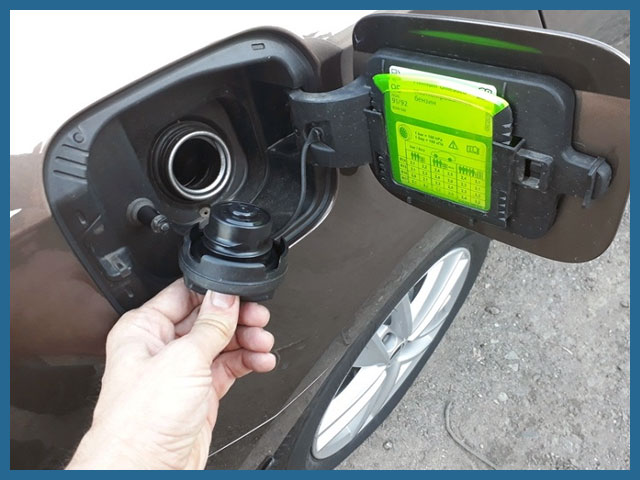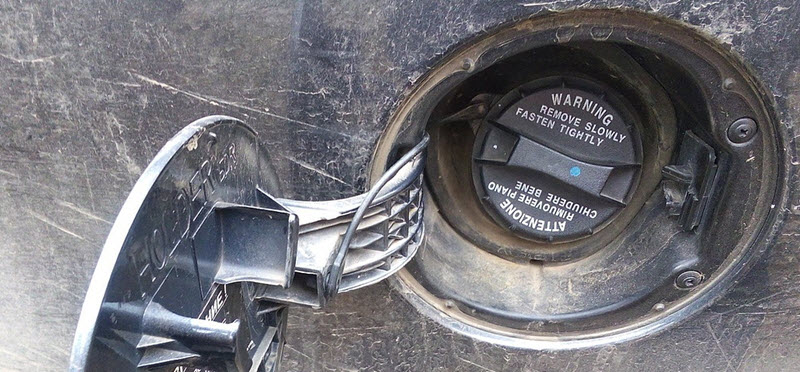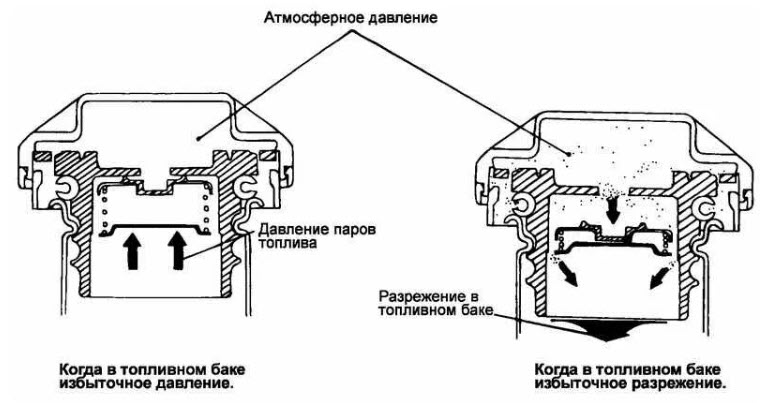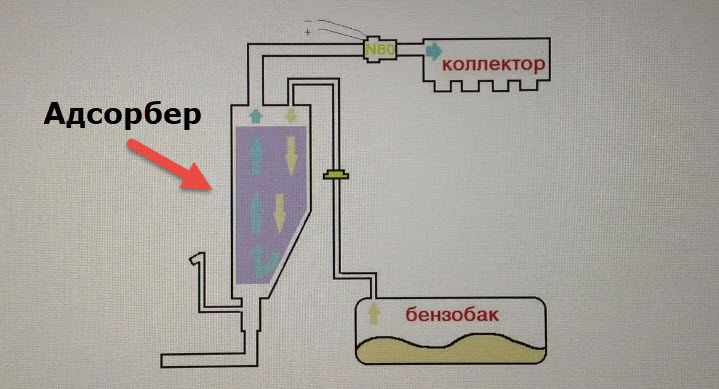
Why is air hissing when opening the gas cap?
Content
Not so long ago, car fuel tank caps were not airtight. They had a small hole, sometimes with a simple filter, to equalize the pressure in the tank with atmospheric pressure. Naturally, no hissing occurred when such a plug was opened, except that the ventilation channel was completely clogged.

In these cases, fortunately quite rare, the cars worked wonders - stalling unpredictably and suddenly draining the tanks, which, after checking, turned out to be the result of flattening and loss of capacity. Now everything has changed, ventilation began to comply with strict environmental standards.
What causes a hiss when opening the gas tank cap
With the same hissing sound, air can both go in when opening the cork and go out. The magnitude and sign of pressure depend on many factors:
- with regular consumption of gasoline during a trip, the volume of the tank not occupied by it increases, therefore, with conditional tightness, the pressure will drop;
- it also depends on temperature, the fuel expands slightly, but the increase in gas pressure and the amount of fuel vapor in it work much more; in physics, the term partial components is used;
- the tightness of a real fuel system is indeed conditional, since measures have been taken to ventilate the tank, but malfunctions can occur in the equipment that implements these measures, after which the hiss increases to a very noticeable and frightening.
We can say that a slight hiss under certain conditions is provided constructively and is not a sign of a malfunction.
The principle of operation of the ventilation of most machines has threshold values, depressurization is triggered when stepping over these thresholds. Numerically, they are small and do not threaten the preservation of the shape of the gas tank or the normal operation of the gasoline pump.
What is the danger?
Problems will arise in case of malfunctions in ventilation. An increase in pressure to a dangerous value is unlikely, for this the tank would have to be artificially boiled, but the fall will occur for quite natural reasons.

An electric fuel pump is installed in the tank, constantly pumping out part of the fuel to power the car's engine.
If you do not ventilate the tank, that is, communicate it with the atmosphere, then such a vacuum is formed that the tank will lose its shape, it will be squeezed by the environment with a force of up to 1 kilogram per square centimeter.
Really much less, but enough to ruin an expensive part.
How are gasoline vapors removed?
The tank ventilation system with the introduction of environmental standards has become very complicated. An adsorber was introduced into it - a device for collecting gasoline vapors from gases exchanged with the atmosphere.
Along the way, several nodes serving its work appeared. Particularly advanced systems even have a pressure sensor in the fuel tank, which is quite logical from the point of view of the theory of automatic electronic control, but looks like overkill for mass designs.

Previously, the so-called two-way valves, which open at low pressures in both directions, for the inlet and outlet of gas, did quite well.
Since it is impossible to simply dump the excess into the atmosphere, it is first necessary to select gasoline vapors from them, that is, the gas phase of the fuel. To do this, the tank cavity first communicates with a separator - this is a tank where gasoline foam remains, that is, not quite gas, and then with an adsorber. It contains activated carbon, which successfully separates hydrocarbons from atmospheric air.
It is impossible to accumulate gasoline vapors forever, as well as to achieve their condensation and discharge, therefore the adsorber is cleaned in the purge mode.
The electronics switch the corresponding valves, the coal filling is blown with outboard filtered air, after which it, already saturated with fuel, enters the intake manifold through the throttle.
Gasoline will be used strictly for its intended purpose, a rare case when the interests of the economy and the environment are carried out simultaneously.
Can you drive with the gas cap open?
The apparent simplicity of the issue after illumination will not solve the general problem - what should be the hiss, when and under what circumstances can we talk about a malfunction.
The most advanced engine management systems will react on their own by triggering emergency tank pressure diagnostics. For everyone else, you will have to react intuitively, according to the situation, remembering how the car hisses from the tank, being serviceable.
Obvious problems will be the smell of gasoline in the cabin and the deformation of the tank. The latter will be the result of a loud pop when opening the cork. Especially in plastic tanks.
The situation is rare, because in addition to regular ventilation, which is quite reliable, there are also emergency valves of a purely mechanical design.
You can drive somewhere close with the tank lid ajar, observing precautions. In particular, when cornering and banking, gasoline can simply splash out with all possible consequences.
And dust, dirt and moisture will get into the tank, which is extremely unfavorable for a thin fuel system with its pumps, regulators and nozzles.
With a stubborn unwillingness to repair and seal the tank, you will have to spend much more on repairing the injection system and its support.
As a temporary solution, you can get away, only on the way you need to periodically open the cork and tighten it again, paying attention to the intensity of the hiss.
